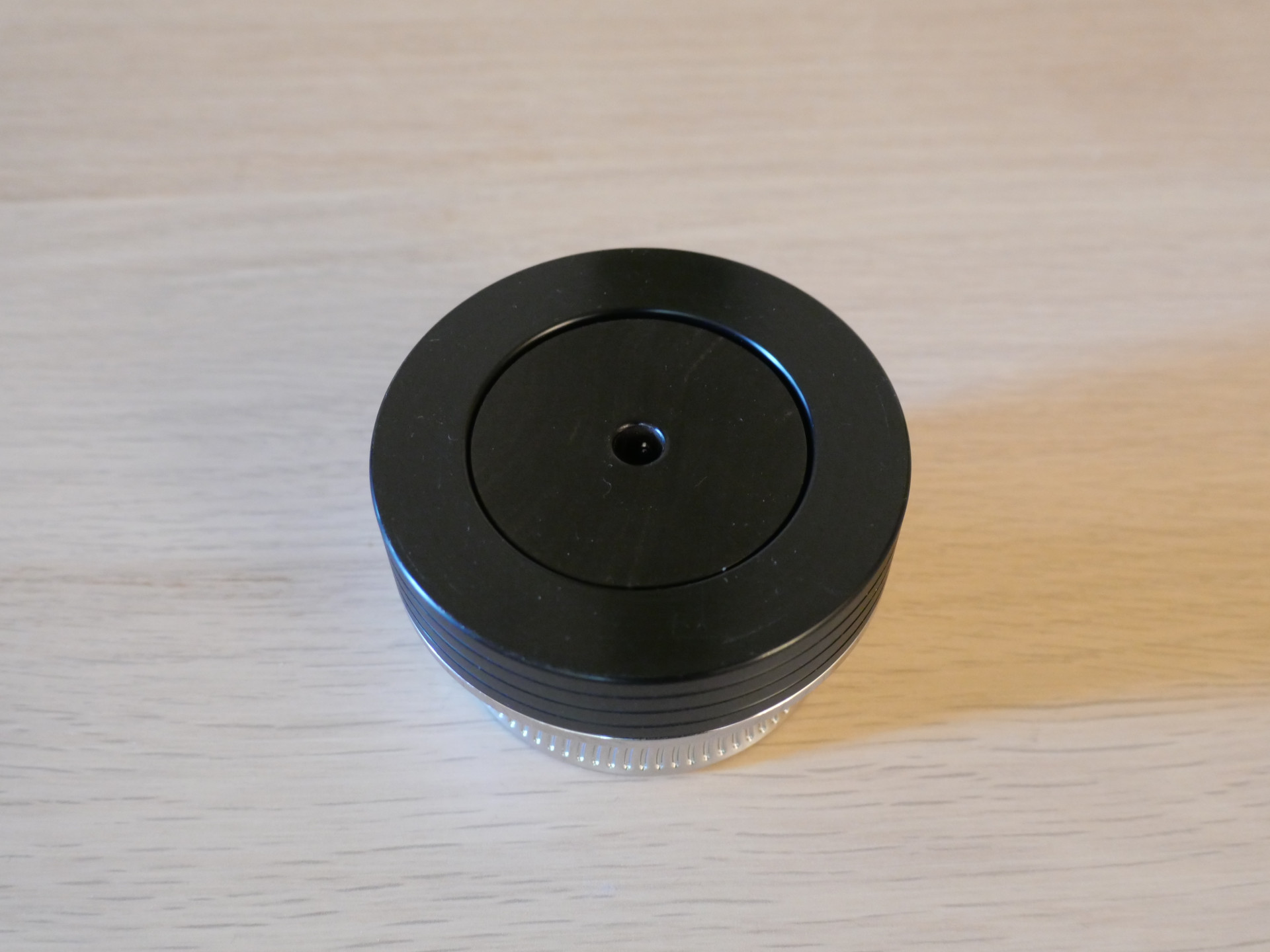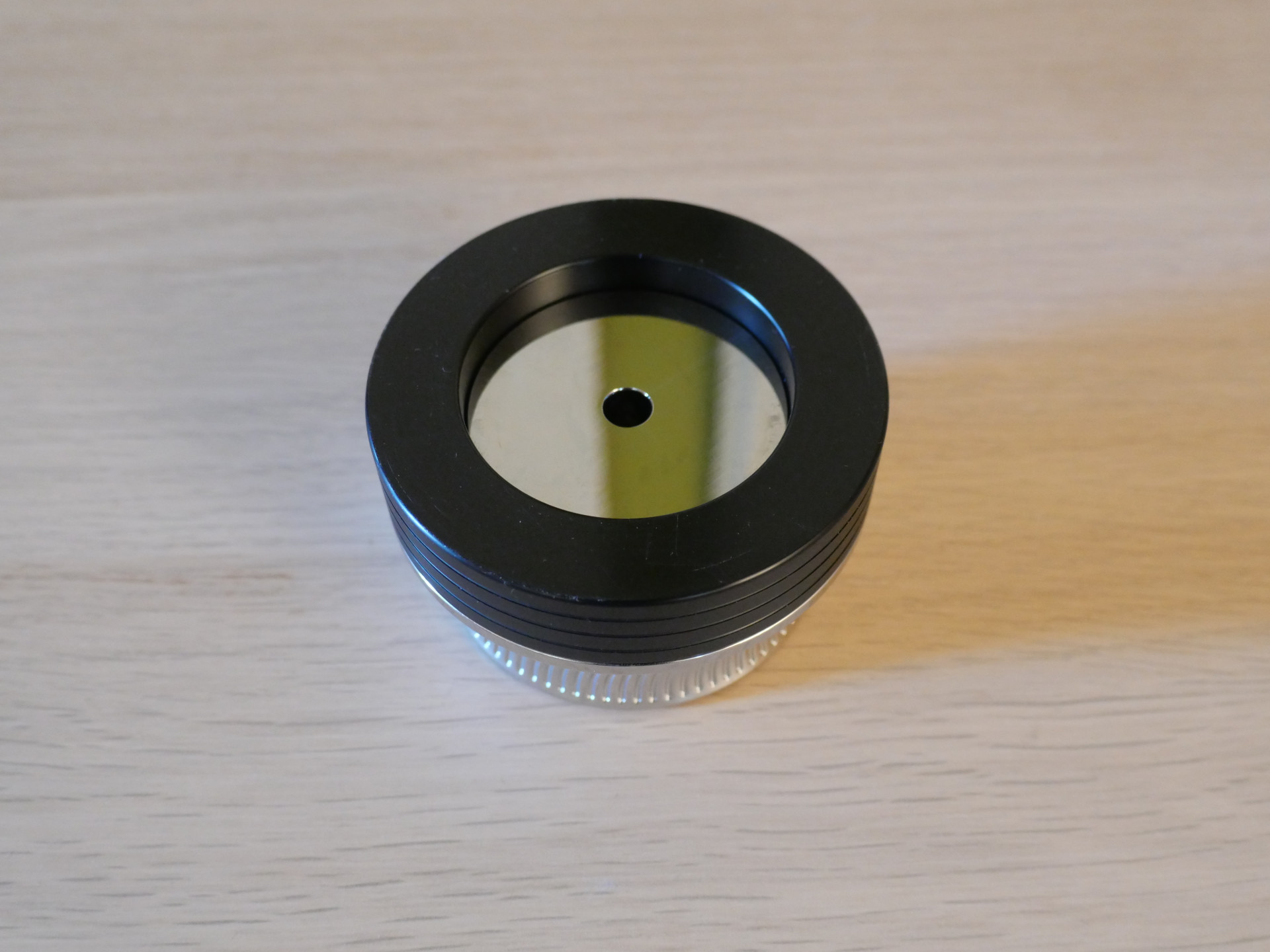When it comes to the mass of the Orbius, I’m not sure the exact numbers are critical, although the light/heavy contrast certainly is. Even in its lightest form, you’ll be adding the best part of a pound to the rotating mass of your record player: worth thinking about if it uses a very light platter, a direct drive motor (whose drive characteristics should be critically tuned to platter mass to minimise noise and maximise control) or a Teflon thrust pad for its main bearing – like the current VPIs.
Place the Orbius on your record player and you are engaging two contact points: the spindle and the surface of the record label. Each is contacted by a different element in the clamp. The base of the alloy core rests directly on the record label. The spindle is enclosed by the Blackwood or Tungsten core. Given that the mechanical energy generated within the record and that emanating from the main bearing are totally different in nature, that makes a whole lot of sense and it is a major difference between this weight and most other ones. Stillpoints can point to the fact that it’s their ‘technology pockets’ that sit on the record label, the body of their clamp that locates the spindle, but as far as I am aware, both elements are made from the same stainless steel. It’s also worth noting that this is far from the first time Mpingo has been used in a record weight, perhaps the most famous/notorious example being the Shun Mook, a product that many a vinylphile swore by not so long ago. in fact, given Mpingo’s near mythical reputation, Arya Audio have probably missed a trick by using the Blackwood name. There have long been arguments about whether the real impact of record weights comes from damping the bearing or the record: the Orbius does both, with an optimised interface for each.
The large diameter bubble level in the top of the Orbius is closely surrounded by a 15mm reference ring. It is definitely a step up on other clamp or weight mounted levels. However, there are two issues with it. The first is that, like any centrally mounted bubble, you must view it from directly above in order to get an accurate reading. Absent any visual guide to viewing angle, as for instance, that provided by Thales in their cartridge/headshell alignment tool, the accuracy of the gauge itself will always be undermined by the vagaries in the viewing angle. Secondly, take as much care as you like, the Orbius still doesn’t match the accuracy of the Level Developments 0.02 gauge – or its ease of use. Bottom line: the Orbius is no substitute for a proper level. But, that doesn’t necessarily invalidate it. What the Orbius does do is offer an ongoing check on turntable level, a visual indication that your ‘table’s level has drifted off. At that point, it’s time to reach for your Level Developments or DigiPass and check things over.
Look in the top of the Orbius and you’ll see that the bubble is surrounded by two, concentric, patterned rings. These are not for decoration. Viewed through your smartphone with the video set at 30FPS and they act as strobe patterns for 33 and 45RPM. Not only does this work, it works brilliantly. I have both KAB and Clearaudio hand-held strobes and discs. The Orbius is way easier to use and as far as I can tell, every bit as accurate. It doesn’t provide the discrete speed setting capability of the KAB, but whether you need that or not depends on how often you play 78s. For everyday use, the Orbius is just fine.
Time to take a listen…
I used the Orbius on the VPI Avenger, fitted with a JMW 12” tonearm and Lyra Etna Lambda and the Origin Live Enterprise carrying a Fuuga. Phono-stage was the Thales Magnifier, allowing both arms to be connected at once. Line-stage was the CH Precision L1, driving JA30s and Living Voice OBX-R4 loudspeakers.



